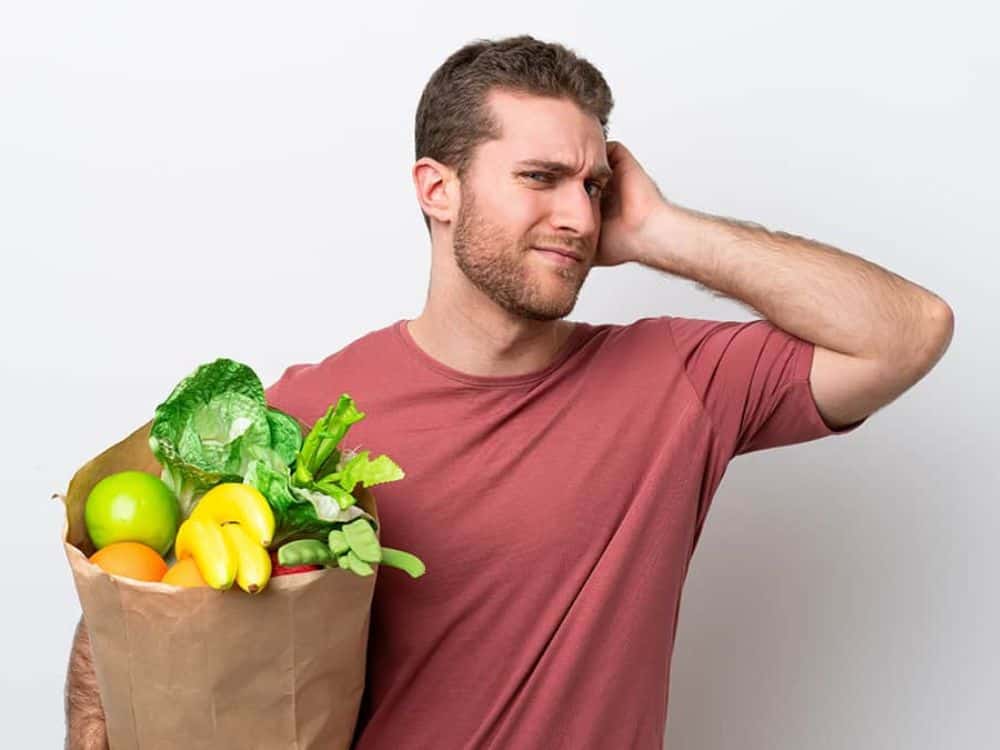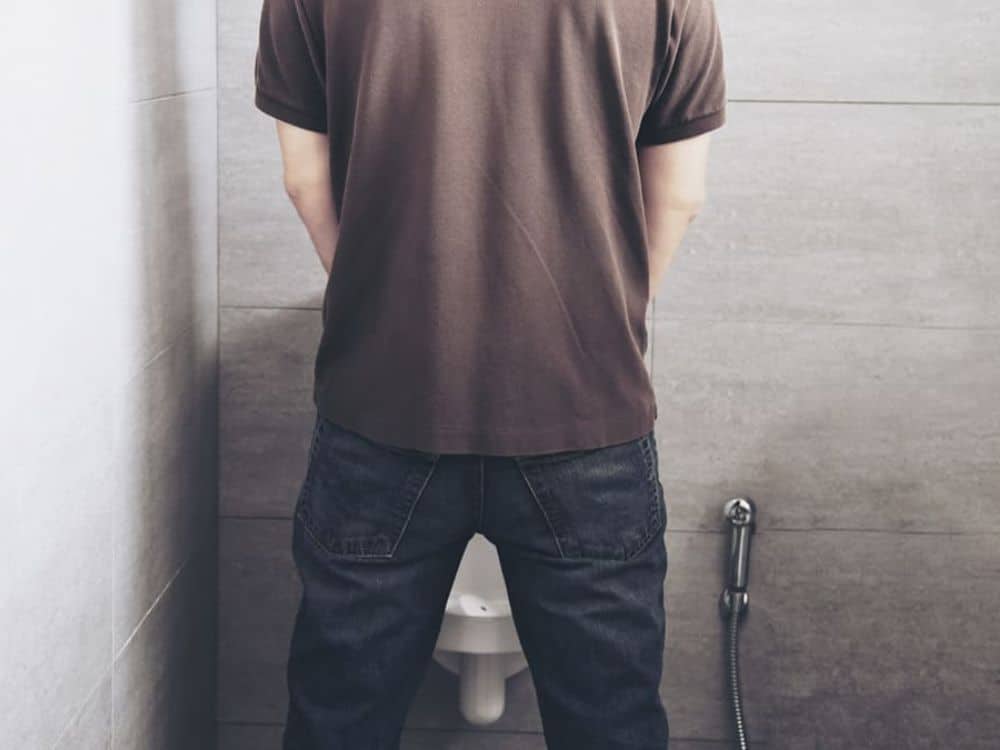
What Is A Health Insurance Premium?





The digestive system breaks down and uses most parts of the food we eat. However, there are some substances that can’t be digested. Anything that can’t be broken down and is left over in the large intestine after a meal is digested is called “residue.”
Residue is mostly made up of fiber. Dietary fiber is a substance made by plants. It is primarily present in plant-based foods like grains and produce. The body can’t break down fiber.
Most people need to eat a lot of fiber in order to maintain good health. Eating more fiber reduces a person’s risk of chronic disorders like diabetes, heart disease, and cancer. The Academy of Nutrition and Dietetics recommends a daily fiber intake of 25 grams for women and 38 grams for men. However, a person may occasionally need to eat smaller amounts of fiber for health reasons.
The goal of a low-residue diet is to eat foods that can be easily broken down by the body and will lead to less residue left over in the digestive system. This diet typically causes people to have smaller, less frequent bowel movements.
A low-residue diet is very similar to a low-fiber diet, but they may not be exactly the same. Low-residue diets do focus on low-fiber foods, but they may also eliminate other types of foods as well. For example, dairy products do not contain much fiber, but still lead to a lot of residue, so these foods may also be avoided. This is important to note if you are following a low-residue diet for the purposes of bowel preparation, dietary or other health reasons.

Some people need to follow a low-residue diet before going through medical procedures. One such procedure is a colonoscopy. During this test, a physician uses a thin tube with a camera on the end to look inside the large intestine. Colonoscopies are used to diagnose certain illnesses and digestive problems. Colonoscopies are also an important part of screening for colon cancer. People with an average risk of developing this cancer should begin getting screened at the age of 45. Before a colonoscopy, a person needs to clean out their bowel. Traditionally, many physicians recommended a bowel prep that involved taking laxatives and consuming only clear liquids for one or more days before the procedure. However, in recent years many researchers have conducted clinical trials looking at other bowel prep methods. Several studies have found that people who ate a low-residue diet before undergoing procedures had equal or better colon cleansing compared to people who followed a clear liquid diet. Additionally, people following a low-residue diet preferred this method and were more likely to stick to the instructions. Physicians may also recommend following a low-residue diet before other intestinal tests. By eliminating leftover residue from the large intestine, this diet can help the physicians see the intestine more clearly and more accurately identify any problems.
Eating low-residue foods may help manage symptoms of conditions that affect the digestive system. Physicians may recommend following this eating plan to people who are dealing with:
There are two different disorders that fall under the umbrella of inflammatory bowel disease (IBD): ulcerative colitis and Crohn’s disease. In both of these conditions, there is ongoing inflammation in the small or large intestine. Over time, this inflammation causes damage and leads to symptoms like abdominal pain, diarrhea, constipation, blood in the stool, weight loss, and tiredness. However, these symptoms don’t occur all of the time. They occur or get worse during disease “flares.” Low-residue diets may help reduce the amount of stool, allowing the intestines rest and leading to fewer IBD symptoms during these flares. Diverticulitis is a condition in which small bulges or pouches form in the intestines, and then — these outpouchings — become inflamed. One study has found that eating foods that are easier on the digestive system, including low-fiber foods, may help reduce symptoms. Irritable bowel syndrome (IBS) is a disorder without a clear cause that leads to several digestive symptoms, including bloating, cramping, constipation, and diarrhea. In the past, most physicians have recommended that people with IBS try eating more fiber. Unfortunately, this can sometimes make symptoms more severe. Now, researchers are finding that a low-fiber diet can lessen symptoms or make them disappear altogether. A low-residue or low-fiber diet may also be necessary before surgery — either surgery on the intestines or gynecological surgery. Following a low-residue diet before these surgeries can help create more room in the abdomen and reduce risk of infection. Additionally, switching to a low-residue diet after intestinal surgery can help people’s intestines begin working again more quickly, leading to a shorter amount of time spent in the hospital.

During a low-residue diet, you’ll want to focus on low-fiber foods. This list of foods provides a good starting point for what you may be able to eat. However, each person digests food differently, so your physician may tell you to avoid foods that are on this list. Always follow your physician’s recommendations. Usually, the foods on this list have low levels of fiber. However, it is still important to check the nutrition facts label for everything that you eat. Some naturally low-fiber foods have extra fiber added in. When it comes to grains, white or refined products have less fiber than whole-wheat and whole-grain products. Stick to:
Most cooked, tenderized meats are okay to have on a low-residue diet. You can also have poultry and eggs. For plant-based options, you can try tofu and smooth peanut butter. Most fruits and vegetables should not be eaten raw. Cooking produce, removing skins and seeds, and avoiding pulp helps you cut back on fiber and residue. Vegetables that can be eaten raw include small amounts of zucchini, cucumbers, or lettuce. Make sure to peel and remove seeds first. You can also have cooked, canned, or juiced versions of the following vegetables:
When it comes to fruits, juices are always a good option — but make sure to buy pulp-free! Sauces and purees like applesauce are also good bets. Raw melon, cantaloupe, bananas, apricots, nectarines, peaches, and plums are usually okay to have on a low-residue diet. If you’re eating raw fruit, make sure it’s very ripe. You can also have canned fruits as long as they don’t come in heavy syrup. Make sure to drink plenty of fluids while on a low-residue diet. This can help prevent constipation, which is common when eating low-fiber foods.
Avoid whole-grain and whole-wheat foods, which contain a lot of fiber. Additionally, stay away from:
When it comes to meats, stay away from processed meats like hot dogs and sausage, and say no to any deli meats. You should also avoid nuts and crunchy peanut butter, beans, and tempeh, as these are all high-fiber foods. Avoid any vegetables that aren’t on the above lists. Additionally, stay away from any vegetables that haven’t been de-seeded or peeled. When it comes to fruit, you should avoid all dried fruits, as these typically contain a lot of fiber. You should also choose not to eat any pineapple, berries, figs, and prunes. Ask your physician whether it is okay to eat dairy products. Some low-residue diet recommendations include limiting or avoiding milk, yogurt, and cheese. These products contain low amounts of fiber but may worsen digestive symptoms and increase the amount of stool that you produce.

If you have only been eating low-fiber foods for a day or two, it may be fine to eat a normal amount of fiber again the next day. Ask your physician for recommendations.
If you have been following a low-residue diet for a longer time period, don’t go back to your usual diet immediately. It will be difficult for your digestive system to handle. Instead, increase the amount of fiber you eat gradually over time. Try eating a small amount of a high-fiber food for a couple of days in a row. If you don’t experience any symptoms, add this food back into your diet.
Some experts recommend adding 5 more grams of fiber to your diet each week. For example, if you have been eating 10 grams of fiber each day, try eating 15 grams of fiber per day the following week, and 20 grams per day the week after that. If you begin to experience digestive symptoms like bloating, cramping, or diarrhea, try decreasing your fiber intake again until the symptoms resolve.
A low-residue diet is similar to a low-fiber diet. In some cases, they may be the same. These diets may be a necessary tool when preparing for certain medical procedures. They can also be a helpful way of managing symptoms for people with digestive diseases. However, people should not usually stay on low-residue diets for long time periods, because fiber helps keep you healthy and prevent chronic illnesses. Follow your physician’s instructions when it comes to beginning and ending a low-residue diet, and heed their recommendations about what to eat and avoid. If you think this is a diet that could benefit you, please discuss with Dr. Connor first by making an appointment.


The prostate is a gland found inside the pelvis, underneath the bladder, and surrounding the urethra (the tube that carries urine from the bladder out of the body). The prostate makes part of the semen, the fluid that contains sperm. In young adults, the prostate is about the size of a walnut. However, it continually grows larger with age, potentially reaching the size of a lemon by the age of 60. In some cases, it may grow too large, leading to an enlarged prostate, also called benign prostatic hyperplasia (BPH). If the enlarged prostate presses against the bladder or urethra, it can lead to some health problems. BPH is not cancer, and men with an enlarged prostate don’t have a higher chance of being diagnosed with cancer. However, some of the symptoms of BPH overlap with those of prostate cancer, so it is important to be aware of any health changes and tell your doctor about any potential symptoms that you notice.

It is important to get early symptoms checked out to make sure they are not signs of cancer. Additionally, if urination problems go untreated, they can eventually lead to more serious issues such as bladder or kidney damage, urinary tract infections (UTIs), bladder stones, or kidney failure. Keep an eye out for symptoms of more serious conditions, such as an infection. Seek medical care right away if you have a fever, bloody urine, are urinating less than you usually do, or notice pain in your abdomen, side, or back. If you are experiencing any changes in your urination patterns, talk to your healthcare provider. They may try to figure out the cause of the problem by performing a physical exam or ordering various tests, such as:

There are also certain risk factors that can increase a person’s chances of developing an enlarged prostate. These include:
There are several possible BPH treatment plans that doctors may recommend. The approach that is right for you depends on several factors, such as how severe your symptoms are, whether your symptoms are disrupting your daily life, and your overall health.
Regardless of which treatment plan you choose, experts recommend that you visit your doctor at least once per year if you have an enlarged prostate. Regular check-ups provide the opportunity to switch up your treatment plan if needed.
If you don’t have BPH symptoms, or if your symptoms are mild, your doctor may recommend a “watchful waiting” or “watch and wait” approach. This means that you don’t use any treatments.
During this time, you should visit your doctor regularly so that they can keep an eye on your condition and make sure it isn’t getting worse or leading to other serious problems. If your symptoms start to get more severe, you may then decide that you want to try other treatments.

Some men turn to herbs, supplements, or natural products to ease BPH symptoms. If you choose to go this route, make sure to tell your doctor about everything that you are taking. Some natural products may interact with other medications or supplements or lead to side effects. Early studies found that saw palmetto may help ease symptoms of an enlarged prostate. This substance comes from the American dwarf palm tree, found in the southern parts of the U.S. However, when researchers tested saw palmetto in clinical trials, they found that there was no difference in BPH symptoms when men took saw palmetto compared to a placebo (sugar pill). In additional clinical trials, researchers tested increasingly high doses of saw palmetto, but still saw no effect. On the other hand, a more recent clinical trial found that men found symptom relief when they used saw palmetto oil that contained beta-sitosterol. Other research has also found that beta-sitosterol on its own may lessen urinary symptoms caused by an enlarged prostate. Older research also suggests that Pygeum africanum may help. Studies reported that men who used this supplement, which comes from the bark of the African plum tree, were more than twice as likely to say their symptoms got better compared to men who took a placebo.

Alpha blockers such as Cardura (doxazosin) and Flomax (tamsulosin) relax muscles in the pelvis near the prostate. This can help urine move through the urethra more easily. While these medications don’t affect the size of the prostate, they can often relieve symptoms quickly. Some men who take these medications may experience side effects such as headache, dizziness, or tiredness.
Proscar (finasteride) and Avodart (dutasteride) are 5 alpha-reductase inhibitors, medications that actually shrink the prostate. They do this by blocking an enzyme that helps make more DHT hormone. Because DHT triggers prostate cells to grow more quickly, lowering levels of this hormone leads to a smaller prostate and fewer symptoms. These medications may take a few months to relieve symptoms and may not be suitable for people with more severe BPH. Potential side effects of 5 alpha-reductase inhibitors include decreased libido and erectile dysfunction, although these problems are not common.
Phosphodiesterase-5 inhibitors such as Viagra (sildenafil) and Cialis (tadalafil) are erectile dysfunction medications that can also help treat BPH. These work by relaxing the muscles in the penis. This may help urine flow out more easily.
Some scientific studies have found that using multiple types of medication together may help lead to even better results. For example, doctors may recommend taking both an alpha blocker and a 5 alpha-reductase inhibitor. However, phosphodiesterase-5 inhibitors can interact with alpha blockers, so let your doctor know if you are using these medications.
In some cases, an enlarged prostate may occur along with prostatitis (inflammation of the prostate). This condition is sometimes caused by infection, so taking antibiotics can sometimes lead to symptom relief.
Doctors may recommend surgery for more severe cases of BPH that are causing problems like incontinence, bloody urine, frequent infections, or kidney problems. It may also be a good solution when medication isn’t working.
The most common surgery for an enlarged prostate is transurethral resection of the prostate (TURP). This procedure is generally safe and effective. It involves inserting a thin tube into the urethra and using it to remove excess prostate tissue.
In some cases, doctors may recommend other types of surgery. One possibility is transurethral incision of the prostate (TUIP), in which a surgeon makes a few small cuts in the prostate in order to help widen the urethra. In laser surgery, a tiny laser is passed through the urethra and used to get rid of prostate tissue. An open prostatectomy involves making a cut through the skin and removing all or part of the prostate gland.
Several kinds of minimally-invasive surgical procedures may also be an option. These procedures often involve using heat or electricity to destroy prostate tissue. Minimally-invasive surgeries may be a good
It’s important for each individual to work with their doctor to figure out the best treatment plan — what works best for you may not be a good fit for someone else.
For milder cases of an enlarged prostate, lifestyle changes, supplements, or certain medications may be enough to relieve symptoms. If these solutions aren’t enough, other medications or surgery may be more helpful. Additionally, it’s important to tell your doctor about any changes in urination. Even mild symptoms can occasionally be a sign of a more serious condition.
If you are having any of the symptoms above, or have other questions about your prostate, make an appointment with Dr. Connor.


Of course, there’s no way to permanently halt the aging process. However, eating right and taking care of yourself can help minimize age-related damage and keep you feeling as good as you can throughout many decades of life.
(I encourage you to read my entire series on superfoods to learn about what is so super about superfoods as well as about superfoods for weight loss, heart health, diabetes and pre-diabetes, radiant skin and gut health.)
Every part of your body goes through age-related changes. Your skin loses its elasticity, your muscles become weaker, and your bones lose strength.
Additionally, the older you get, the higher your risk for health conditions such as:
Adopting healthy habits, including eating more nutritious foods, may help slow down these changes and keep you as healthy as possible as you age.
Experts are still learning about the many factors that bring about aging. However, they have identified a few possible causes, which may be affected by lifestyle habits such as diet.
Some genes help control aging. These genes may be turned on or off or develop mutations that lead to age-related changes within cells.
Aging is also linked to damage. Small molecules called reactive oxygen species (ROS) can form within cells. ROS damage DNA and cells, causing a cell to age. On the other hand, antioxidants are substances that get rid of ROS, helping prevent and heal damage. Some unhealthy foods can lead to higher levels of ROS, while other foods can act as antioxidants, keeping your cells young.
Inflammation is another factor that leads to aging. A little bit of inflammation is necessary to help the immune system fight off germs or toxins. But chronic (ongoing) inflammation can accelerate the aging process and lead to age-related health problems. Different foods can help raise or lower the amount of inflammation in the body.

There’s no one definition of a “superfood,” but the label tends to be given to foods or drinks that offer higher levels of health-boosting nutrients. Superfoods also frequently contain helpful molecules like antioxidants, which protect cells from free radicals and help heal the damage that builds up with age. Additionally, many superfoods have been shown to help reduce the risk of developing different chronic diseases.
Adding more of these foods to your diet may help you keep your body healthy and make you look and feel as young as possible as you age!
Blueberries are a powerful superfood that can help keep you healthy into your later years. These fruits contain antioxidants and other anti-aging molecules.
Blueberries can protect nerve cells from ROS and inflammation. This can help prevent or even reverse age-related problems with memory, cognitive abilities, balance, and motor function.
Blueberries also contain molecules called anthocyanins that help protect against disorders like diabetes and heart disease. They may even help protect against early death.
Different kinds of nuts — including almonds, walnuts, pistachios, Brazil nuts, and pine nuts — provide healthy fats and protein and help protect against inflammation. Another big benefit of eating nuts is their ability to help prevent age-related health conditions such as diabetes, heart disease, and cognitive problems like Alzheimer’s disease and dementia.
Nuts may even help you live longer. One study found:
Pomegranates are a fantastic superfood that contain several anti-aging molecules.
Several substances found in pomegranates can help protect cartilage from being degraded. This may help keep joints healthy and protect against arthritis.
These fruits also contain molecules called ellagitannin and ellagic acid. When you eat pomegranate, the good bacteria in your gut transform these chemicals into urolithin A (UA). UA reduces inflammation and gives a boost to the mitochondria (small structures that make energy for your cells).
UA can also protect against age-related problems that appear in your muscles, joints, brain, and other tissues. In some laboratory studies, UA also helped animals live longer, although this has not yet been tested in humans.
Eating more tomatoes may be an easy way to keep your skin healthy as you age. Tomatoes contain lycopene, a red pigment that also acts as an antioxidant. Pro tip: your body can absorb lycopene from tomato paste more easily than it can from fresh tomatoes.
Researchers have found that lycopene is present in your skin cells and in the oil that your skin produces, although levels decrease with age. Fortunately, eating more lycopene can increase how much of this molecule is present in your skin, bringing lycopene levels up to those seen in young adults. Studies have also found that eating more tomato paste protects the skin from sun damage.
Tomatoes may provide other benefits as well. Some research shows that eating more tomatoes can help reduce your chances of being diagnosed with serious conditions like heart disease and cancer.
Salmon, as well as other fatty fish like trout, mackerel, sardines, and tuna, is a great source of vitamin D, protein, and healthy fats, making it an important superfood.
Levels of vitamin D in the body tend to drop with age. This is bad news for your bones, since vitamin D is needed to keep them strong and healthy. Low vitamin D levels mean an increased risk of weak or broken bones. Not getting enough of this vitamin also puts you at risk for certain age-linked diseases like high blood pressure, diabetes, depression, and cancer. Making sure you have enough of this vitamin as you age is essential.
Healthy protein sources also become increasingly important as you age. The older you get, the more muscle mass you lose. Eating higher levels of protein can help combat this and keep the muscles healthy.
The omega-3 fats found in salmon and other fish also help with healthy aging. They can reduce inflammation and protect brain health, helping prevent age-related declines in thinking and memory abilities.
Milk and dairy products such as cheese and yogurt provide several important nutrients. Like fatty fish, milk is a good source of protein. In the United States, milk is also usually fortified with extra vitamin D, making it another good source of this vitamin.
Dairy foods also contain a lot of calcium, a mineral that is important for bone health. Low calcium levels can eventually lead to osteoporosis, a disease in which the bones become weak. Older adults may also be at risk for this condition because some medications may prevent the body from absorbing as much calcium as it normally would. Getting enough calcium from your diet is important at every age and can help prevent future bone problems.
People who want to age well should look to whole grains. Try switching out white bread for whole wheat bread, refined pasta for wheat pasta, and white rice for brown rice. You can also eat more grains like quinoa, oats, or popcorn.
Research shows that middle-aged adults who eat more whole grains are more likely to have better physical and mental health, and are less likely to have chronic illnesses.
Turmeric is the super spice that gives Indian curries their yellow color. Turmeric contains a molecule called curcumin that can help improve many aspects of health and has some anti-aging properties.
Laboratory studies have found that curcumin can help worms, flies, and mice live longer. It’s not yet clear whether turmeric can affect lifespan in humans, but researchers have identified several ways in which this spice can affect aging.
Curcumin can boost the body’s own natural antioxidants. It can also turn off several genes linked to aging. Finally, it can lessen symptoms of certain health conditions linked to aging and inflammation, such as heart disease, diabetes, and cancer.
While it may not be a “superfood” in the usual sense, water is an important nutrient that is vital for aging well. Your skin loses moisture as you get older, which makes it age. Staying hydrated is important for keeping all of your tissues healthy.
Your sense of thirst may also decrease as you get older, making it harder to remember to drink enough fluids. Additionally, staying hydrated is important when taking certain medications for chronic health conditions.
Make a plan to drink a certain number of glasses of water each day. Plan when you’re going to have drinks — don’t wait until you feel thirsty. Try having a full glass of water with every meal, and while taking any medication. If drinking enough water is difficult, you can also drink some low-fat or nonfat milk, or juice without added sugar or salt.

While eating superfoods can help protect against illness, following a healthy eating plan may provide even better results. Researchers have developed certain diets that reduce a person’s chances of developing conditions that may come on with age.
One of the best-studied diets is the Mediterranean diet. It emphasizes plant-based meals with lots of vegetables, fruits, whole grains, olive oil, and seafood. This diet can lower the risk of developing heart disease, diabetes, Alzheimer’s disease, and certain types of cancer. In one study, people who followed the Mediterranean diet more closely were 26% less likely to have an early death from heart problems.
A related diet, called Dietary Approaches to Stop Hypertension (DASH), helps lower blood pressure and cholesterol levels and boost heart health.
The Mediterranean-DASH Intervention for Neurodegenerative Delay (MIND) diet combines elements from both eating plans above. The MIND diet encourages people to eat leafy green vegetables, berries, whole grains, nuts, beans, and wine. It can help protect against Alzheimer’s disease and dementia.
Many different lifestyle factors affect how we age. If you want to maintain health into your later years, you may also want to consider making other changes.
Nearly one in three adults over the age of 50 are physically inactive. Additionally, people with chronic health conditions are more likely to report that they don’t get as much exercise. However, physical activity is very important — it can help prevent or treat many different disorders and reduce a person’s chances of an early death.
Experts make the following physical activity recommendations for older adults:
If you can’t reach all of the above goals, remember that doing something is better than nothing. The more time you spend moving and the less time you spend sitting, the better! Make sure to talk to your doctor before starting a new exercise plan to make sure that you are being active in a way that is healthy for you.
Smoking cigarettes and drinking alcohol can speed up the aging process. They can both negatively impact the skin and lead to more wrinkles. Alcohol and tobacco can also increase a person’s chances of being diagnosed with cancer and other serious conditions.
One study also found that people who didn’t drink heavily or smoke, and adopted other healthy habits like eating healthy and getting exercise, were 60% less likely to develop Alzheimer’s disease.
People of all ages can struggle with maintaining good mental health. However, problems like depression or anxiety can have a bigger impact on physical health for older adults. Poor mental health can make it harder for people to seek treatment for other conditions like diabetes or heart disease.
If you notice changes in your mood or emotions, talk to your doctor. Therapy or medication often helps improve your mental health, which can in turn have a positive impact on your physical health.
Your diet increasingly impacts your health as you age. The more you add superfoods and other nutritious foods to your diet, the more you can protect your skin and other organs from age-related damage and decrease your risk of chronic health disorders. Please click here to schedule an appointment with Dr Connor or call us at (512) 382-9500.

In an article in Giddy, Dr. Connor explains that although its primary function is reproductive system development and maintenance, estrogen also plays a key role in bone, breast and brain health, Connor said. Estrogen bolsters bone strength, and the lack of it can contribute to weak, brittle bones and osteoporosis. Read the entire article in Giddy. If you are concerned with bone strength and want to discuss it further, make an appointment with Dr. Connor.
